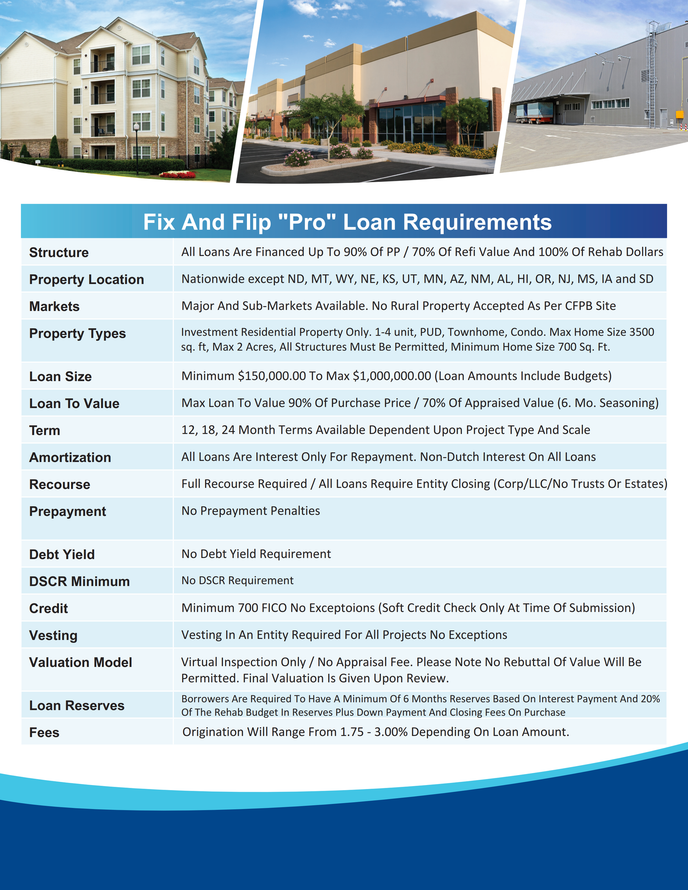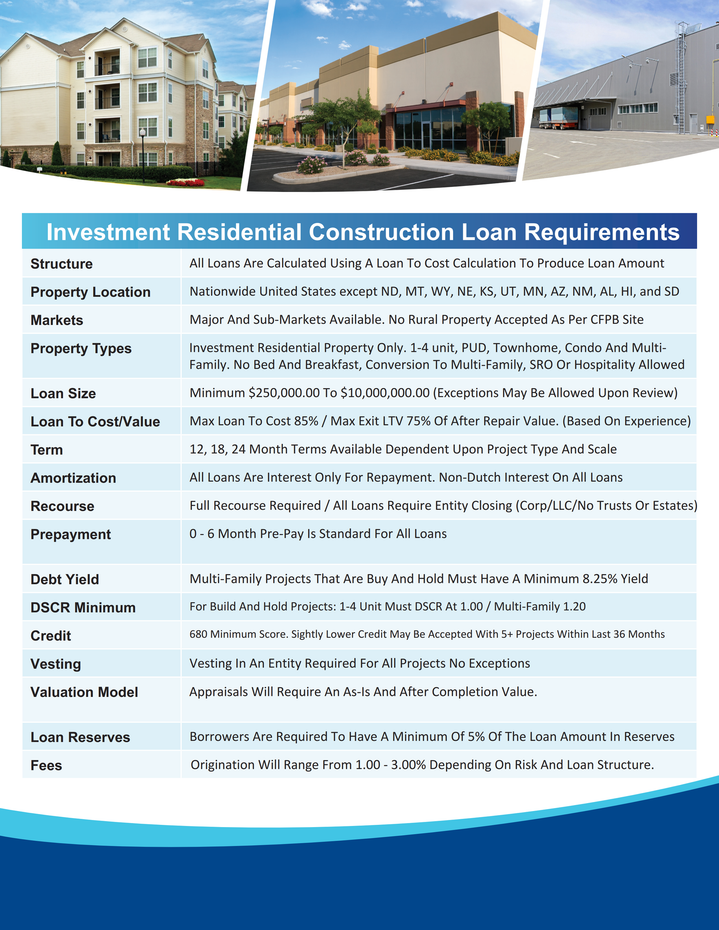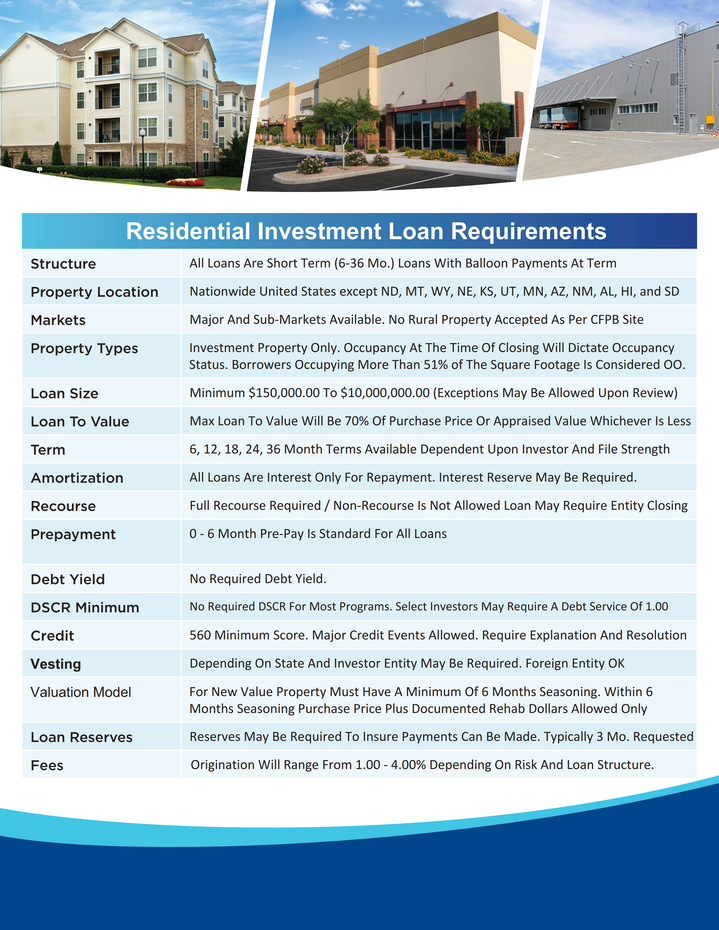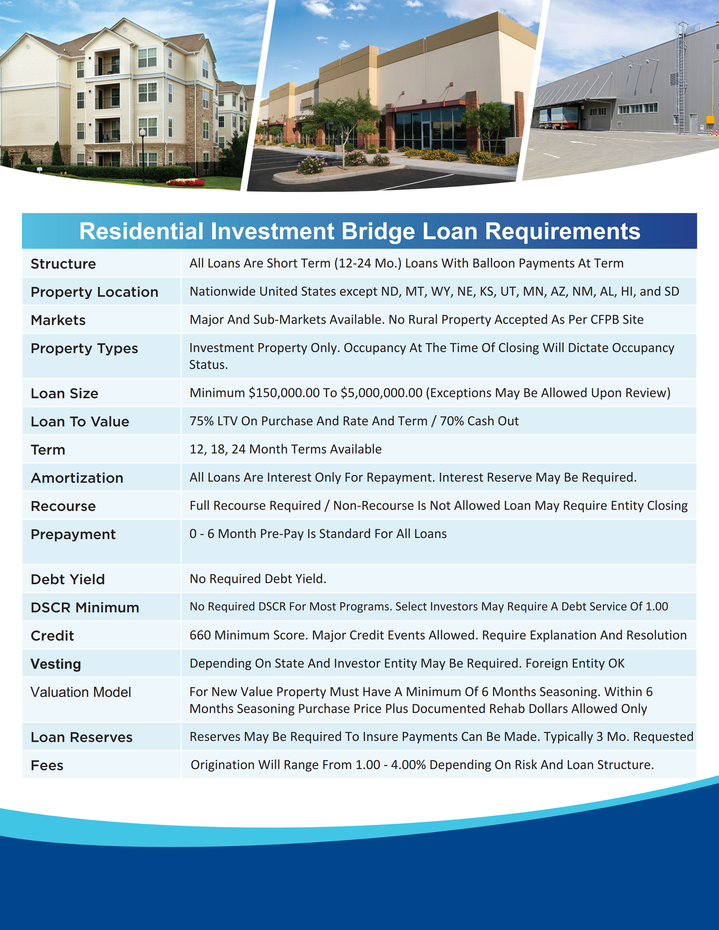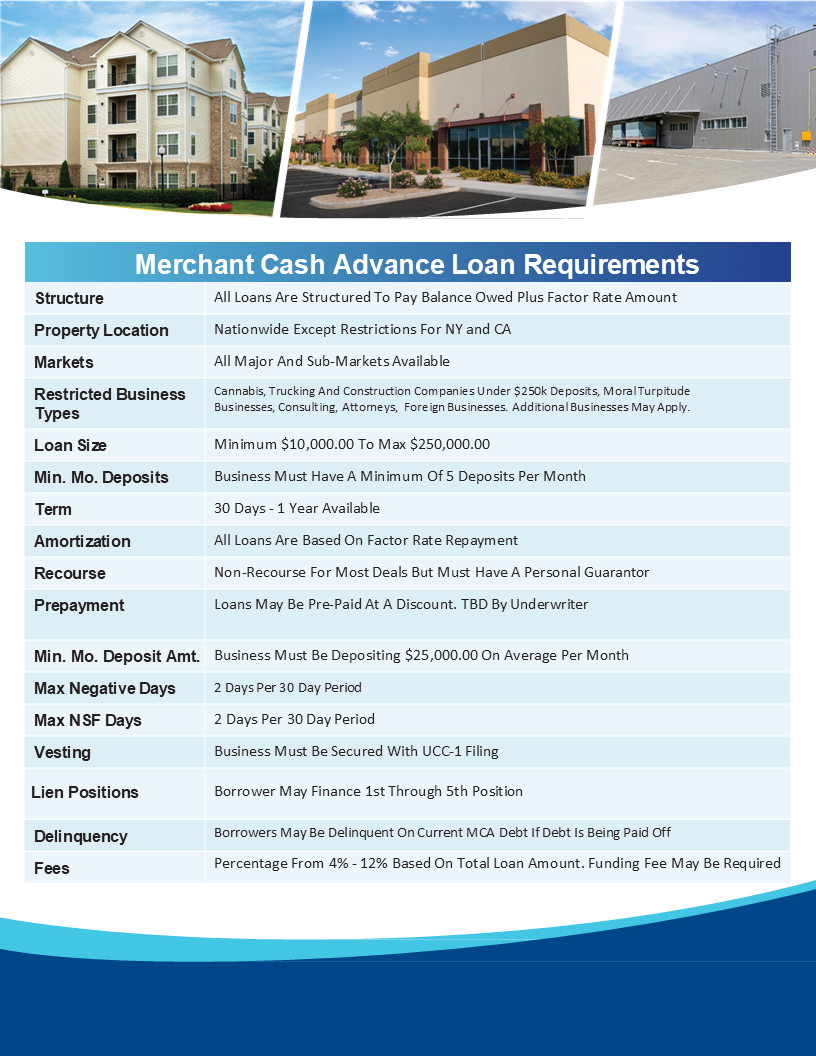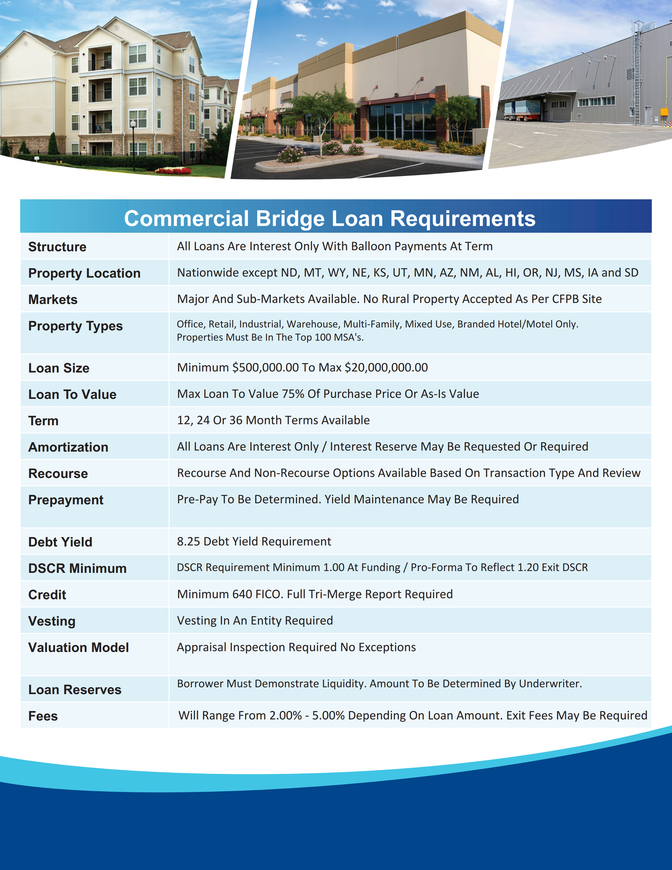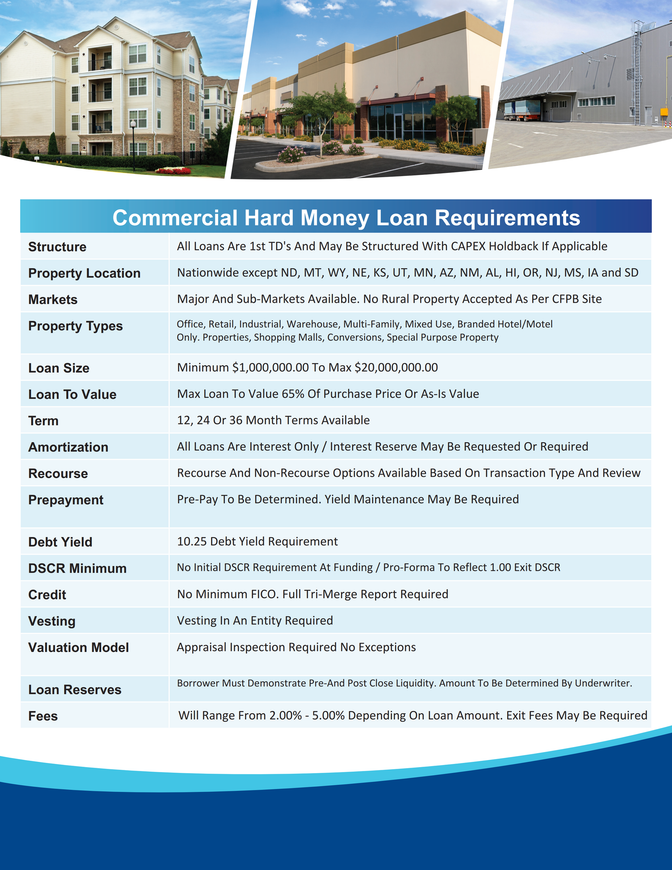Our Loan Programs
We mainly fund most loans ourselves. We also have access to hundreds of outside commercial real estate lenders and residential investors. They can help us fund any type of loan. Our team has more than 30 years of experience in residential and commercial real estate lending. We ensure your loans close quickly and at the lowest rates.
Request Additional Information
Our Promise
Best Rates & Fees
We offer the most aggressive competitive pricing in the market!
Flexible Loan Programs
We have a diverse set of in house loan programs, investors & real estate lender network to fund most loan scenarios.
Robust Technology
Our web based technology streamlines loan intake, doc upload, & loan processing.
On-time, Fast Closings
We close loans faster than banks & our competition. Receive funding within 7-10 days
Easy Application
Our Quick & Full App intake process is fast, easy & smart. It knows what info to ask & required docs for you to upload.
Dedicated Account Rep
Every borrower is VIP, that's why you get a dedicated account rep that always knows your loan status.
We are here to help!
Need our rates or guidelines? Want to discuss a deal?Contact Us!

By Don Brown
•
October 29, 2024
Navigating the world of real estate investing can be complex. One of the key challenges is securing the right financing. This guide will explore various financing options for real estate investors. It will provide insights into loans and investment strategies tailored to your needs. From Residential Investment Bridge Financing to Fix & Flip Loans, we'll delve into the details. We'll also discuss the impact of credit scores, down payments, and market conditions on your financing options. By understanding these financing options, you can make informed decisions. This will help maximize your returns in the real estate market. Understanding Real Estate Investment Financing Real estate investment financing involves a range of lending options tailored for property investors. These financing solutions help investors purchase, build, or renovate properties to grow their portfolios. Choosing the right financing strategy is crucial. Each option has unique terms, interest rates, and eligibility criteria that can significantly affect returns. Therefore, investors should carefully evaluate their goals and the specifics of each financing product to optimize their investments. Traditional Mortgage Loans for Real Estate Investing Traditional mortgages are a common choice for purchasing rental properties. They typically offer lower interest rates and longer repayment terms. However, they often require a solid credit score and a significant down payment. Investors must demonstrate the ability to manage multiple mortgage payments effectively to qualify. Residential Investment Bridge Financing Residential Investment Bridge Financing serves as a short-term loan solution. It's ideal for investors needing quick funds to purchase new properties while waiting for the sale of an existing one. These loans typically have higher interest rates but offer flexibility in funding urgent investments. They help bridge the financial gap efficiently. Residential Construction Loans Residential Construction Loans provide the capital necessary for building new properties from the ground up. They are typically short-term loans covering construction costs until the project is completed. These loans require a well-structured plan and accurate budget estimates. Once construction concludes, securing a permanent mortgage usually follows, allowing investors to manage long-term repayments. Residential Hard Money Loans Residential Hard Money Loans are an option for investors needing quick financing with fewer requirements. These loans are often used for time-sensitive investments or when traditional lending isn't feasible. Hard money lenders primarily focus on the property's value rather than the borrower's credit score. This flexibility can be beneficial but typically comes with higher interest rates. Fix & Flip Loans Fix & Flip Loans support investors who buy, renovate, and sell properties quickly. These loans provide funds to cover purchase and renovation costs, facilitating swift turnarounds. Lenders focus on project potential and expected resale value, often requiring detailed plans. While interest rates are higher than traditional loans, they enable efficient project completion and potential profit. Leveraging Investment Strategies in Real Estate Strategically leveraging existing properties can be a powerful way to finance additional acquisitions. Investors often use equity from one property to fund another, enhancing their portfolios. Partnering with other investors can also amplify purchasing power and share risks. This collaborative approach allows pooling of resources, expanding financing possibilities. Conclusion: Choosing the Right Financing Option Selecting the right financing option is crucial for maximizing returns in real estate investing. Carefully evaluate your needs and align them with appropriate financial strategies. Tranquility Commercial Real Estate Company Tranquility Commercial Real Estate Company specializes in providing tailored financing solutions for commercial property investors. With a focus on understanding the unique needs of each client, they offer a range of services including traditional loans, bridge financing, and hard money loans. Their experienced team guides investors through the complexities of commercial real estate financing, ensuring that clients can make informed decisions that align with their investment goals. By partnering with Tranquility CRE, investors can access the capital needed to seize opportunities in the commercial real estate market, enhancing their potential for growth and profitability.
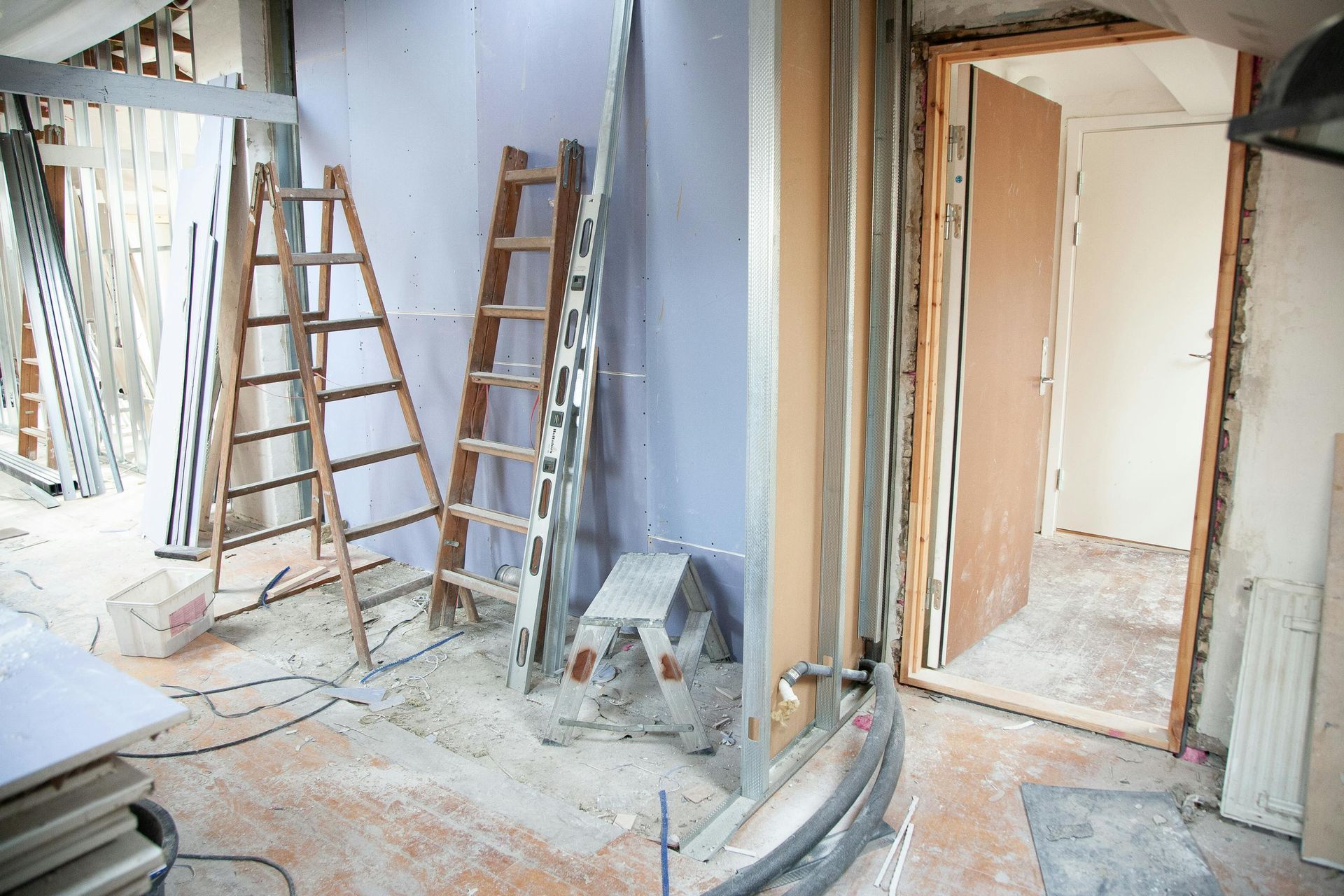
By Don Brown
•
October 23, 2024
Financing Your Fix and Flip Investment The world of real estate investment is vast and varied. One popular strategy is the fix and flip. Fix and flip involves buying a property, renovating it, and selling it for a profit. It's a strategy that can yield significant returns if done right. However, financing your fix and flip investment can be a challenge. It requires careful planning, a solid understanding of the market, and access to the right resources. In this article, we'll explore various financing options and strategies for your fix and flip investment. We aim to provide you with the knowledge to make informed decisions in your real estate flipping journey. Understanding Fix and Flip Investments Fix and flip is a real estate investment strategy. It involves purchasing a property, improving it through renovations, and then selling it for a profit. The key to success in fix and flip lies in buying low, renovating efficiently, and selling high. It's a strategy that requires a keen eye for potential, a good understanding of the real estate market, and the ability to manage a renovation project. However, it's not without its challenges. Financing the purchase and renovation of a property can be a significant hurdle for many investors. Understanding the various financing options available can help you navigate these challenges and set you on the path to a successful fix and flip investment. What is Fix and Flip? Fix and flip is a term used in real estate to describe the process of buying a property, fixing it up, and then selling it for a profit. The 'fix' part involves renovations and improvements to increase the property's value. The 'flip' part refers to the quick sale of the property after the renovations are complete. The Potential for Profit in Flipping Real Estate Flipping real estate can be a profitable venture. The potential for profit is often determined by the purchase price, the cost of renovations, and the sale price. However, it's important to note that the profit margin can vary greatly. It depends on factors such as the state of the property, the real estate market, and the efficiency of the renovations. The key to maximizing profit in flipping real estate lies in careful planning, efficient management of renovations, and a good understanding of the real estate market. Financing Options for Your Fix and Flip Project There are several financing options available for your fix and flip project. The best option for you will depend on your financial situation, your credit score, and the specifics of your project. Here are some of the most common financing options for fix and flip projects: Traditional bank loans Hard money lenders Private money lenders Home Equity Lines of Credit (HELOC) Crowdfunding for real estate Traditional Bank Loans Traditional bank loans are a common source of financing for real estate investments. These loans typically have lower interest rates and longer repayment terms than other financing options. However, securing a bank loan can be a lengthy process. It often requires a good credit score, a solid business plan, and substantial collateral. Hard Money Lenders Hard money lenders offer short-term loans specifically for real estate investments. These loans are typically based on the value of the property, rather than the borrower's credit score. While hard money loans can be easier to secure and quicker to obtain than bank loans, they often come with higher interest rates and fees. Private Money Lenders Private money lenders are individuals or private companies that lend money for real estate investments. These lenders often offer more flexible terms and faster approval times than traditional lenders. However, interest rates can be higher, and you may need to provide a detailed business plan and financial projections to secure the loan. Home Equity Lines of Credit (HELOC) A Home Equity Line of Credit (HELOC) allows you to borrow against the equity in your home. This can be a good option if you have substantial equity in your home and a good credit score. However, it's important to remember that your home is used as collateral, so there's a risk of losing your home if you can't repay the loan. Crowdfunding for Real Estate Crowdfunding platforms allow you to raise funds for your fix and flip project from a large number of people, typically via the internet. This can be a good option if you have a compelling project and a strong network. However, crowdfunding can be a complex process, and it's important to understand the platform's fees and terms before you start. Evaluating Your Financing Needs Before you start looking for financing, it's important to evaluate your needs. This includes estimating the cost of purchasing the property, the cost of renovations, and the potential selling price. You should also consider your timeline. If you plan to flip the property quickly, a short-term loan may be the best option. If you plan to hold onto the property for a longer period, a long-term loan may be more suitable. It's also important to consider your credit score and financial health. These factors can significantly impact your ability to secure financing and the terms of your loan. Finally, don't forget to factor in unexpected costs. Flipping a property can often involve unforeseen expenses, so it's wise to have a contingency fund. Importance of ARV and LTV Ratios The After Repair Value (ARV) and Loan-to-Value (LTV) ratios are two key metrics in fix and flip financing. The ARV is the estimated value of the property after renovations. This figure is crucial as it helps you determine the potential profitability of your project. The LTV ratio is the amount of the loan compared to the value of the property. Lenders often use this ratio to assess the risk of the loan. A lower LTV ratio typically means lower risk for the lender. Assessing Your Credit Score and Financial Health Your credit score and overall financial health are important factors in securing financing. A high credit score can help you secure better loan terms, while a low score can limit your options. It's also important to assess your financial health beyond your credit score. This includes your income, savings, debt-to-income ratio, and financial stability. Lenders will consider all these factors when deciding whether to approve your loan. Risks and How to Mitigate Them Like any investment, fix and flip projects come with their own set of risks. Understanding these risks is crucial to making informed decisions and protecting your investment. The risks can range from unexpected renovation costs to changes in the real estate market. There's also the risk of not being able to sell the property at a profit. Understanding the Risks of Fix and Flip Investments One of the main risks in fix and flip investments is underestimating the cost of renovations. This can lead to overspending and reduce your profit margin. Another risk is changes in the real estate market. If property values decrease, you may not be able to sell the property at a profit. Strategies for Minimizing Financial Risk To minimize financial risk, it's important to thoroughly inspect the property before purchasing. This can help you identify potential issues and estimate renovation costs more accurately. Another strategy is to have a contingency fund. This can cover unexpected expenses and protect your investment. It's also important to stay informed about the local real estate market and adjust your strategy as needed. Tips for Successful Fix and Flip Financing Securing financing for your fix and flip project is just the first step. To ensure the success of your investment, there are several strategies you can employ. First, it's crucial to have a solid business plan. This can help you secure financing and guide your investment decisions. It's also important to build a network with contractors and real estate professionals. They can provide valuable insights and help you find profitable investment opportunities. Creating a Solid Business Plan A solid business plan is a key component of successful fix and flip financing. It should outline your investment strategy, including your target market and potential properties. Your business plan should also include a detailed budget. This can help you manage your finances and ensure the profitability of your investment. Building a Network with Contractors and Real Estate Professionals Building a network with contractors and real estate professionals can provide valuable insights. They can help you identify potential investment opportunities and estimate renovation costs. Having a strong network can also help you negotiate better deals. This can increase your profit margin and ensure the success of your fix and flip investment. Conclusion and Next Steps Financing your fix and flip investment requires careful planning and strategic decision-making. By understanding your financing options and evaluating your financial health, you can secure the necessary funds for your project. Remember, success in real estate flipping is not just about securing financing. It's also about managing risks, creating a solid business plan, and building a strong network. With these strategies, you can maximize your profits and grow your fix and flip business.
